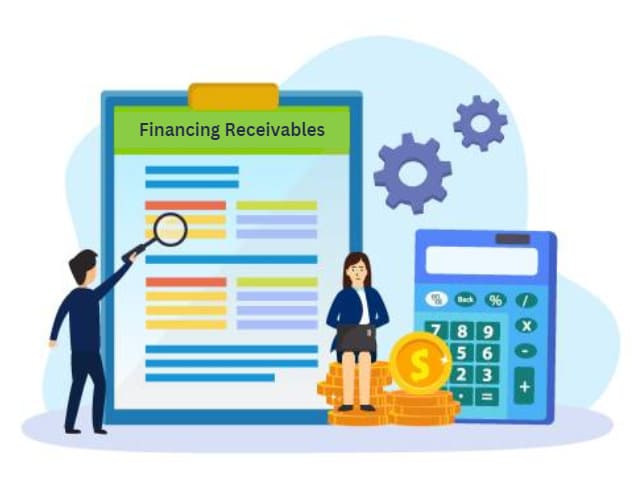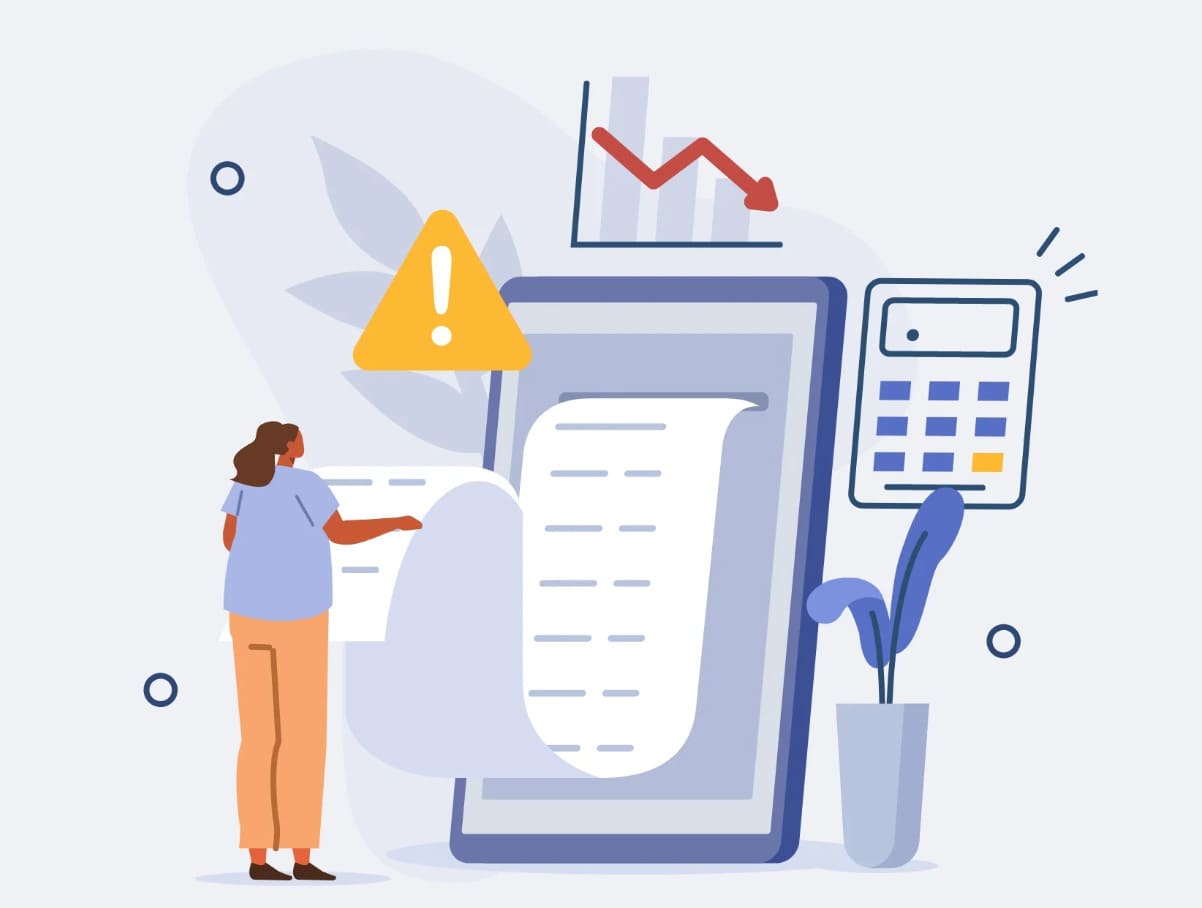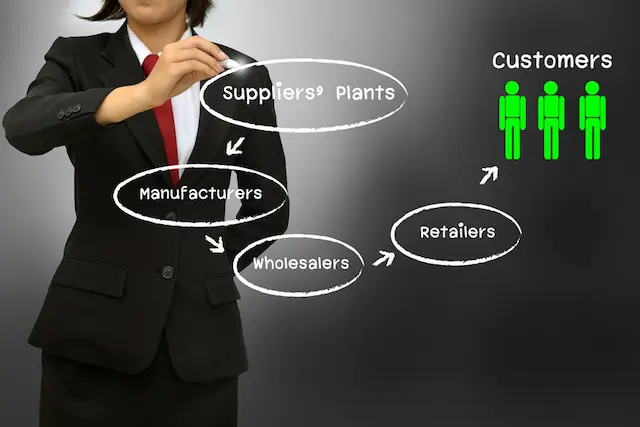In today’s fast-paced business environment, managing cash flow effectively is crucial for the financial health of any organization. Two popular strategies to achieve this are Early Payment Discounts and Dynamic Discounting. While both methods incentivize prompt payment from buyers, they differ significantly in structure, flexibility, and implementation. This blog aims to explain these concepts with examples and a detailed comparison, helping you determine which approach might be best for your business.
What’s an Early Payment Discount?
Early Payment Discounts are a long-established method where sellers offer buyers a discount for paying invoices before the due date. This straightforward incentive encourages buyers to settle their bills promptly, benefiting both parties.
Example:
Imagine a supplier offers terms of “2/10, net 30.” This means the buyer can take a 2% discount on the invoice amount if they pay within 10 days. Otherwise, the full payment is due in 30 days.
- Invoice Amount: $10,000
- Discount Offered: 2% ($200)
- Payment in 10 Days: $9,800
- Payment in 30 Days: $10,000
Benefits of Early Payment Discounts
Understand how early payment discounts are beneficial for sellers and buyers.
For Sellers
- Improved cash flow and reduced risk of late payments.
- Enhanced liquidity and the ability to reinvest funds quickly.
- Stronger buyer relationships due to mutually beneficial terms.
For Buyers
- Cost savings from discounts, which can add up over time.
- Potential for better negotiation leverage on future purchases.
Drawbacks of Early Payment Discounts
Understand the drawbacks of early payment discounts for sellers and buyers.
For Sellers
- Potential reduction in profit margins.
- Dependence on buyers’ willingness to take advantage of the discount.
For Buyers
- Requires careful cash flow management to ensure availability of funds for early payment.
What’s Dynamic Discounting?
Dynamic Discounting is a more modern and flexible approach where the discount rate varies based on how early the invoice is paid. The earlier the payment, the higher the discount offered. This method allows both buyers and sellers to optimize their cash flow dynamically.
Example:
A supplier and buyer agree on a dynamic discounting structure where the discount decreases over time:
- 0-10 Days: 2% Discount
- 11-20 Days: 1.5% Discount
- 21-30 Days: 1% Discount
- Invoice Amount: $10,000
- Payment in 5 Days: $9,800 (2% discount)
- Payment in 15 Days: $9,850 (1.5% discount)
- Payment in 25 Days: $9,900 (1% discount)
- Payment in 30 Days: $10,000 (no discount)
Benefits of Dynamic Discounting
Understand how dynamic discounting is beneficial for sellers and buyers.
For Sellers
- Enhanced control over cash flow by adjusting discounts based on current needs.
- Increased likelihood of early payments due to flexible discount options.
- Better alignment with cash flow projections and financial planning.
For Buyers
- Greater flexibility in managing payments based on cash availability.
- Opportunities to optimize working capital by choosing the best payment timing.
- Potential for incremental cost savings compared to fixed discount terms.
- Drawbacks of Dynamic DiscountingUnderstand the drawbacks of dynamic discounting for sellers and buyers.For Sellers
-
-
- Requires sophisticated systems to manage and calculate varying discounts.
- More complex to communicate and negotiate with buyers.
-
For Buyers
-
-
- Necessitates careful cash flow planning to maximize savings.
- Potential complexity in tracking and managing variable discounts.
-
Comparison: Early Payment Discounts vs. Dynamic Discounting

Here’s a detailed comparisons of Early Payment Discounts and Dynamic Discounting for a better understanding:Definition and Concept
Early Payment Discounts
Early Payment Discounts are predefined incentives offered by suppliers to buyers for paying invoices ahead of the standard payment terms. A common example is a 2/10, net 30 term, where the buyer can take a 2% discount if the invoice is paid within 10 days, instead of the standard 30 days.Dynamic Discounting
Dynamic Discounting is a more flexible approach that allows buyers to choose payment dates that offer varying discount rates. Instead of a fixed discount for an early payment, suppliers offer discounts that dynamically change depending on how early the payment is made. The earlier the payment, the larger the discount.Flexibility
Early Payment Discounts
EPDs offer limited flexibility as the discount terms are fixed and predefined. Buyers have to adhere to the specified discount period to benefit from the discount. If they miss the window, they pay the full amount by the standard due date.
Dynamic DiscountingDynamic Discounting provides greater flexibility since discounts are available on a sliding scale. Buyers can choose the most advantageous time to pay based on their cash flow, gaining discounts proportional to the earliness of their payments.
Financial Benefits
Early Payment Discounts
EPDs can be financially attractive, offering a substantial percentage discount for early payments. However, the financial benefit is capped at the fixed discount rate, which might not be optimal for all parties involved.Dynamic Discounting
Dynamic Discounting can potentially offer better financial returns for both buyers and suppliers. Buyers can take advantage of varying discount rates to maximize their savings, while suppliers can optimize their cash flow by incentivizing earlier payments.Implementation and Technology
Early Payment Discounts
Implementing EPDs is relatively straightforward and doesn’t require sophisticated technology. It’s often based on established credit terms and agreements between buyers and suppliers.Dynamic Discounting
Dynamic Discounting requires more advanced technology, such as specialized financial software platforms that can calculate and manage the varying discount rates. This technology facilitates real-time adjustments and tracking of discounts based on payment timing.Cash Flow Management
Early Payment Discounts
EPDs provide a straightforward method for buyers to manage their cash flow by taking advantage of early payment incentives. For suppliers, it means receiving payments sooner, which can improve their liquidity.Dynamic Discounting
Dynamic Discounting offers more sophisticated cash flow management. Buyers can better align their payments with their cash flow cycles, while suppliers can forecast and manage their cash inflow more accurately, potentially leading to improved financial stability and planning.Relationship Impact
Early Payment Discounts
EPDs can strengthen buyer-supplier relationships by providing clear, predictable benefits for early payments. However, if buyers consistently miss the discount window, it can lead to dissatisfaction.Dynamic Discounting
Dynamic Discounting can enhance relationships by providing mutual benefits and greater flexibility. The adaptability of discount rates can lead to more collaborative financial planning and better alignment of interests between buyers and suppliers.Adoption and Market Trends
Early Payment Discounts
EPDs are well-established and widely adopted, especially in industries with long-standing trade practices. Their simplicity makes them a popular choice among traditional businesses.Dynamic Discounting
Dynamic Discounting is gaining traction with the rise of digital transformation and fintech solutions. Its adoption is growing among companies looking for more agile and tech-savvy financial management solutions.Cost and Complexity
Early Payment Discounts
The cost of implementing EPDs is generally low, both in terms of financial outlay and operational complexity. It’s a straightforward process that involves simple adjustments to payment terms and schedules.Dynamic Discounting
Implementing Dynamic Discounting can be more costly and complex due to the need for technology and integration with financial systems. However, the potential savings and cash flow improvements often justify the initial investment.In summary, Early Payment Discounts and Dynamic Discounting offer different advantages and cater to varying needs. Early Payment Discounts are simpler and more predictable, making them suitable for businesses seeking straightforward financial arrangements. Dynamic Discounting, with its flexibility and potential for greater financial optimization, appeals to businesses that prioritize cash flow management and technological integration. The choice between the two depends on a company’s financial strategy, technological capability, and relationship dynamics with suppliers.
Also Read: Early Payment Discounts: Realizing Value in Accounts Payable
Conclusion
Choosing between Early Payment Discounts and Dynamic Discounting depends on your business’s specific needs and capabilities. Early Payment Discounts offer a straightforward approach to improving cash flow and incentivizing prompt payments. On the other hand, Dynamic Discounting provides greater flexibility and the potential for more strategic financial management.
If your business prefers simplicity and has limited technological resources, Early Payment Discounts might be the way to go. However, if you are looking for a more sophisticated solution that allows for dynamic cash flow management, investing in Dynamic Discounting could yield significant benefits.
By understanding the differences and advantages of each method, you can make an informed decision that aligns with your financial goals and operational capabilities.
Also Read: Early Payment Discounts: Should You Use Them in Your Business?In the dynamic world of business, managing finances efficiently is key to ensuring sustained growth and success. One crucial aspect that often takes center stage is the management of receivables – the money owed to your business by customers.
This blog aims to shed light on the strategic use of financing receivables and the impactful practice of vendor financing, offering insights that are both accessible and beneficial to businesses of all sizes.
Financing Receivables:- What is Financing Receivables

Accounts receivable financing is a different way to get money compared to going to a regular bank. Basically, it’s a money move where you borrow cash using the money your customers owe you.
Here’s the deal: if your company is waiting for money to come in, but you need cash ASAP to cover your bills, accounts receivable financing steps in to help. It’s also great for businesses that don’t want to hassle with collecting money from people who owe them. Instead, they can pay a little fee and get the money right away.
In simple terms, it’s like turning the future money you’re expecting into real cash when you need it!
Types of Financing Receivables
Here are different types of financing receivables options that you need to understand:
Collateralized Loan Option
-
-
- If you have customers who owe you money, you can use these accounts as collateral for a loan from a financing company.
- When your customers settle their bills, you can use that money to pay off the loan.
-
Invoice Factoring Option
-
-
- Another way is to sell your accounts receivable to a factoring company.
- With a service known as invoice factoring, the factoring company buys your non-delinquent unpaid invoices.
- They pay you an upfront percentage, called the advance rate, of what your customers owe.
- The factoring company then collects payments directly from your customers, and once the accounts receivable are paid, they keep a small factoring fee and give you the remaining balance.
-
Advantages of Financing Receivables
Understand some of the benefits of financing receivables to help you make a wiser and informed decision:
Upfront Cash for Unpaid Accounts: With receivables financing, you receive immediate funds for invoices that your customers haven’t paid yet. It’s like getting a cash advance based on the money you’re expecting to receive in the future.Potentially Lower Financing Costs: The financing rate in receivables financing may be more cost-effective compared to other borrowing options such as traditional loans or lines of credit. This can be particularly beneficial for businesses looking to manage their costs while accessing the necessary funds.
Relief from Unpaid Bill Collection: Opting for receivables financing can lift the weight of chasing down unpaid bills from your shoulders. Instead of spending time and resources on collections, a financing company takes on this task. It allows your business to focus on its core activities while ensuring a steady flow of working capital.
Ideal for Cash Flow Challenges: Receivables financing is a great solution for businesses facing cash flow issues. Whether you’re waiting for payments from customers or need quick funds to cover operational expenses, this option provides a flexible and accessible way to address cash flow gaps. It’s suitable for a variety of companies, regardless of their size or industry, offering a lifeline during financially challenging periods.
Disadvantages of Financing Receivables
Understand some of the cons of financing receivables to help you make a wiser and informed decision:
Requirement of Outstanding Invoices: To benefit from receivable financing, your business must have outstanding invoices, meaning customers owe you money. This financial option leverages these accounts receivable as assets that can be used to secure a loan or sell to a factoring company.
Importance of Clear Terms for Unpaid Accounts: Keeping clear and accurate records of the terms associated with unpaid accounts is crucial. This includes documenting when payments are expected, the amounts owed, and any specific conditions. Maintaining meticulous records is essential for the smooth process of receivable financing, ensuring transparency and accuracy in the transactions.
Impact of Credit History on Qualification: Qualifying for receivable financing may depend on your business’s credit history. If your business lacks a stable credit history, it could pose a challenge in accessing this form of financing. Lenders or factoring companies often assess the creditworthiness of a business before extending receivable financing. Having a stable credit history enhances your eligibility and may lead to more favorable terms. It emphasizes the importance of maintaining good financial standing to maximize the benefits of receivable financing.
Vendor Financing:- What is Vendor Financing?

Vendor financing, also known as supplier financing or trade credit, is a financial arrangement where a company obtains funding or extended payment terms from its suppliers. In this scenario, the vendor, or the supplier of goods or services, plays a crucial role in providing financial support to the purchasing company.
It’s a smart move when you’re buying a lot of big stuff. If you’re getting things like inventory for a store, computers, vehicles, or machinery, talk to your suppliers about financing deals. It’s like making a deal to pay for these things over time instead of all at once. This helps you avoid running low on cash and gives you the chance to grow your business while paying for the equipment. It’s a win-win!
Also Read : What Is a Vendor? Definition, Types, and Example
Benefits of Vendor Financing
Understand some of the benefits of vendor financing to help you make a wiser and informed decision:
Equipment Purchase without Upfront Payment: One big advantage of vendor financing is that it lets you buy the equipment you need without having to pay for it all upfront. Instead of emptying your wallet in one go, you can work out a deal with your vendor to spread the cost over time. This means you can get essential equipment for your business without a hefty immediate expense.
Preservation of Cash for Emergencies: By using vendor financing, you’re able to keep more cash on hand. This is crucial for dealing with unexpected emergencies or opportunities that may come up in your business journey. Preserving your cash flow provides a financial safety net, allowing you to handle unforeseen challenges without disrupting your day-to-day operations or long-term plans.
Also Read: How to Use Vendor Financing to Buy a Business?
Disadvantages of Vendor Financing
Understand some of the cons of financing receivables to help you make a wiser and informed decision:
Extended Payment Period: One downside of vendor financing is that your payments might stretch out over a long period. While this eases the immediate financial burden, it could mean you’re committed to paying for the equipment over an extended timeframe. This extended payment period may limit your financial flexibility and tie up resources that could be used for other business needs.
Risk of Equipment Retrieval: If you fall behind on your payments, there’s a risk that the vendor could take back the equipment. This is a significant concern because it means not keeping up with your agreed-upon payment schedule could result in losing the very equipment your business relies on. It emphasizes the importance of carefully managing your financial commitments to avoid potential disruptions to your operations.
Distinguishing Accounts Receivables Finance from Accounts Receivable Factoring
Navigating the world of turning accounts receivables into immediate cash flow can be a game-changer for businesses in need of quick funds. While both services share the common goal of providing timely financial solutions, it’s essential to understand their fundamental differences:
Nature of the Transactions
Accounts Receivables Finance (Invoice Financing)
Think of this as a loan. Your business uses its outstanding invoices as collateral to secure a loan. It’s a financial arrangement where you borrow against the money your customers owe you, providing a flexible solution to bridge financial gaps.Accounts Receivable Factoring
In contrast, factoring involves the outright sale of your receivables. Factoring companies become the owners of the current asset – your unpaid invoices. They pay you a portion upfront (known as the advance), and then they collect the full amount directly from your customers.Roles of the Service Providers
Factoring Companies
Factoring companies act as buyers of a business’s current assets, taking ownership of the accounts receivable. They assume the responsibility of collecting payments from your customers.Accounts Receivable Financing Companies
On the other hand, companies providing accounts receivable financing act as financiers or lenders. They extend a loan to your business, using the outstanding invoices as collateral, without taking ownership of the receivables.Scope of Application
Accounts Receivable Factoring
Factoring is specifically tailored for commercial financing. It is a solution designed for businesses looking to optimize their cash flow by selling their unpaid invoices in commercial transactions.Final Words
In the world of business, managing finances wisely is the key to success. Whether it’s unlocking cash through accounts receivables financing or securing equipment with vendor financing, these financial tools offer both opportunities and considerations. Accounts receivables financing turns future money into immediate cash, ideal for addressing cash flow challenges.
Vendor financing, on the other hand, lets you spread the cost of essential equipment, preserving cash for emergencies. While each has its advantages, it’s crucial to weigh the pros and cons. Whether you’re considering accounts receivables financing or vendor financing, understanding these financial strategies empowers you to make informed decisions, propelling your business toward sustained growth and financial resilience.
Credlix is becoming a big player in helping businesses with money. We want to make small businesses stronger, so we offer really good financing solutions made just for them.
Also Read : What Is a Vendor? Definition, Types, and Example
-




